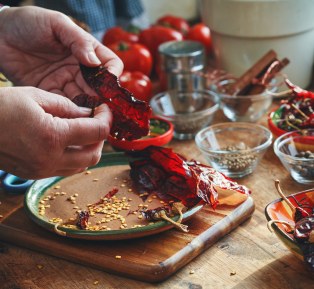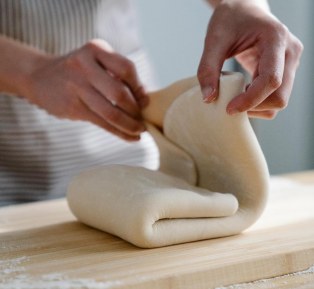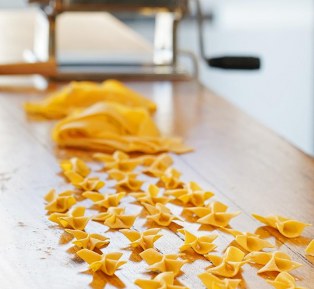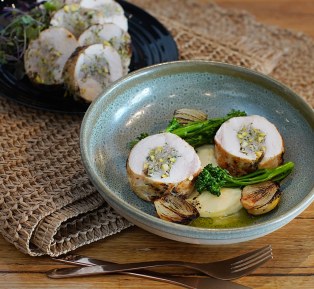
Culinary Inspiration by Otao Kitchen
Cook . Connect. Celebrate
At Otao Kitchen, we believe cooking is one of the most powerful ways to connect—with yourself, your loved ones, and the world around you. It can put a smile on your face, bring family and friends together, and create memories that last a lifetime.
But cooking is more than just connection—what you choose to cook and eat impacts your health and the health of the planet. That’s why we’re passionate about making it as easy and enjoyable as possible for everyone to experience the joy of good, home-cooked food.
“Cook to Connect” is at the core of everything we do. Through our blog, food experiences, and global travel inspiration, we explore the deep relationships between cuisine, culture, and community. From vibrant street food across the globe to time-honoured family recipes passed through generations, we share with you the stories, flavours, and traditions that shape the way the world eats.
Here, you’ll find:
Practical cooking tips and techniques
Authentic global recipes
Cultural and culinary insights
Event planning advice
Kid-friendly cooking inspiration
Travel stories and destination food guides
Seasonal celebrations and global food festivals
Whether you're in your home kitchen or exploring a faraway land, we’re here to help you cook with purpose—and connect with the world through food.
Cooking Class Voucher: A Gift of Flavorful Experiences
Have you ever found yourself wondering, "What’s the perfect gift for someone who seems to have everything?"
Custom Cooking Classes for Private Events: A Delicious Way to Celebrate
Have you ever wondered how to make your next private event unforgettable? Maybe you're searching for a unique experience that will bring people together and create lasting memories. If so, have you considered hosting a custom cooking class?
15 Easy Asian recipes for beginners
Have you ever craved the vibrant flavors of Asian cuisine but felt a bit intimidated to try cooking it at home? I used to feel the same way.
Top 10 Corporate Event Venues for Hire in Melbourne
"The venue sets the stage for the memories you’ll create." Whether you're planning a team-building workshop, a holiday party, or an impressive client meeting, choosing the right venue is crucial to the success of any corporate event.
How to Make Tapas Dishes: A Guide to Spanish Small Plates
Tapas are more than just small plates of food—they’re a vibrant part of Spanish culture and dining tradition. Originating from Spain, tapas are a delightful way to enjoy a variety of flavors in one meal.
10 Spanish Recipes Every Cook Should Know
Spain, a country renowned for its rich history, vibrant culture, and stunning landscapes, is equally celebrated for its diverse and flavorful cuisine. Spanish recipes are a delightful fusion of traditional ingredients, regional specialties, and culinary artistry that reflect the heart and soul of Spanish life.
A Perfect Korean BBQ Marinade Recipe for Any Meat
Here are six simple Korean BBQ marinades that will infuse your grill with authentic Korean flavors, whether you’re cooking indoors or outdoors. Bulgogi, meaning "fire meat," is one of the most popular Korean dishes, second only to kimchi.
List of Indian Spices for Healthy Heart
India boasts over 40 spices, many of which are unique to specific regions, such as stone flower and garcinia. We’ve curated a list of 15 essential spices that are commonly used across India cuisine, reflecting centuries-old culinary styles from various parts of the vast subcontinent.
Kitchen Fun for Kids: Easy Recipes to Cook as a Family
Cooking together as a family is more than just preparing a meal; it’s about bonding, learning new skills, and making memories that last a lifetime. When you involve your kids in the kitchen, you’re not only teaching them essential life skills but also sparking their creativity and helping them develop a healthy relationship with food.
You may also want to try
Fold & Flow - MFWF
2 Hours
$157
The Confident Home Chef – Sauces, Fermentation & Pickling Workshop
1 Day (9-4pm)
$745
The Confident Home Chef – Bakery Specialties Workshop
1 Day (9-4pm)
$745
The Confident Home Chef – Pastry Specialties Workshop
2 Days (9-4pm)
$745
The Confident Home Chef – Vegetable & Plant-Based Cooking Workshop
1 Day (9-4pm)
$745
The Confident Home Chef – Seafood Mastery Workshop
24 Hours
$745
The Confident Home Chef – Poultry Essential Workshop
1 Day (9-4pm)
$745
The Confident Home Chef – Pork & Game Essentials Workshop
1 Day (9-4pm)
$745















